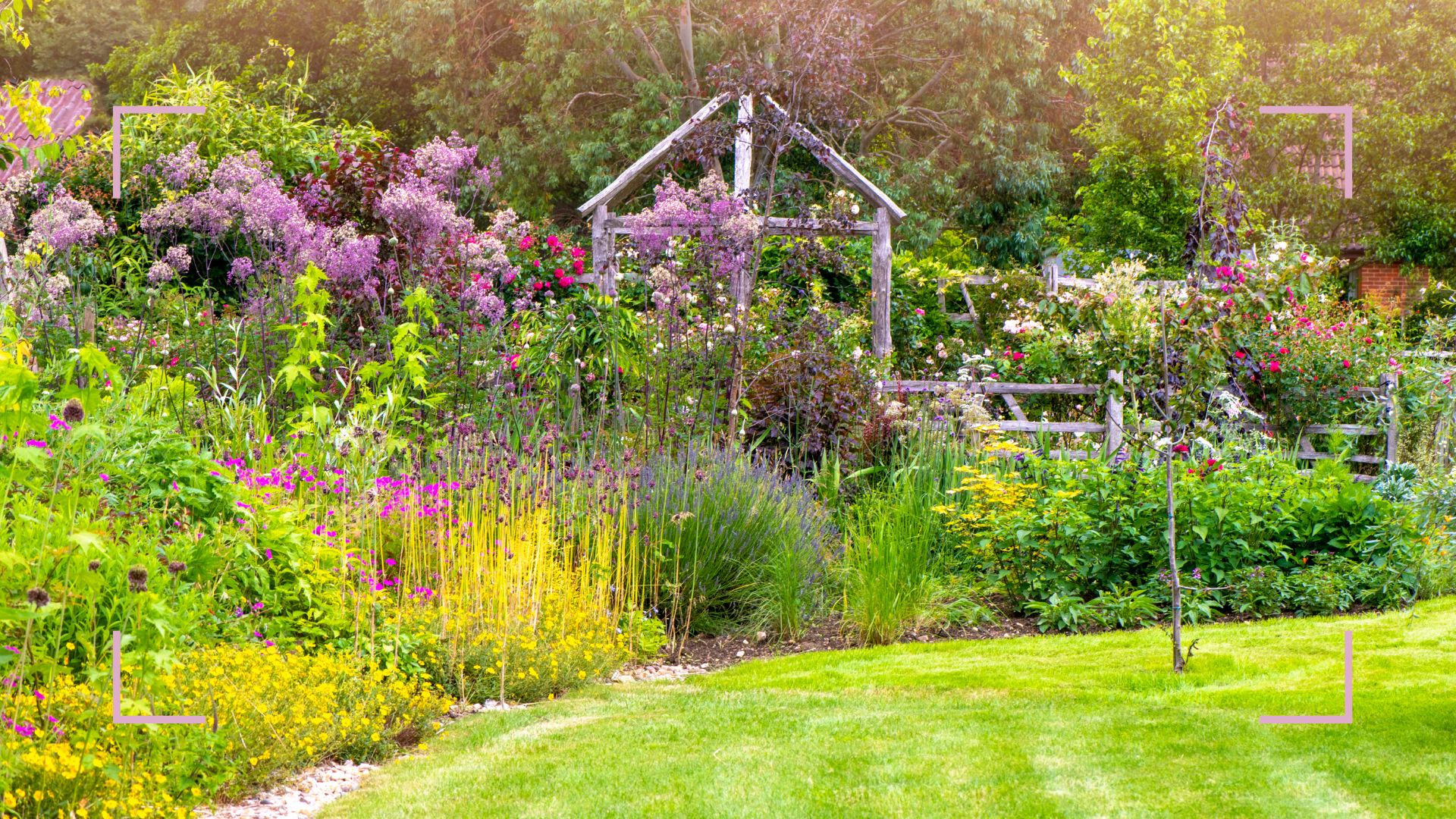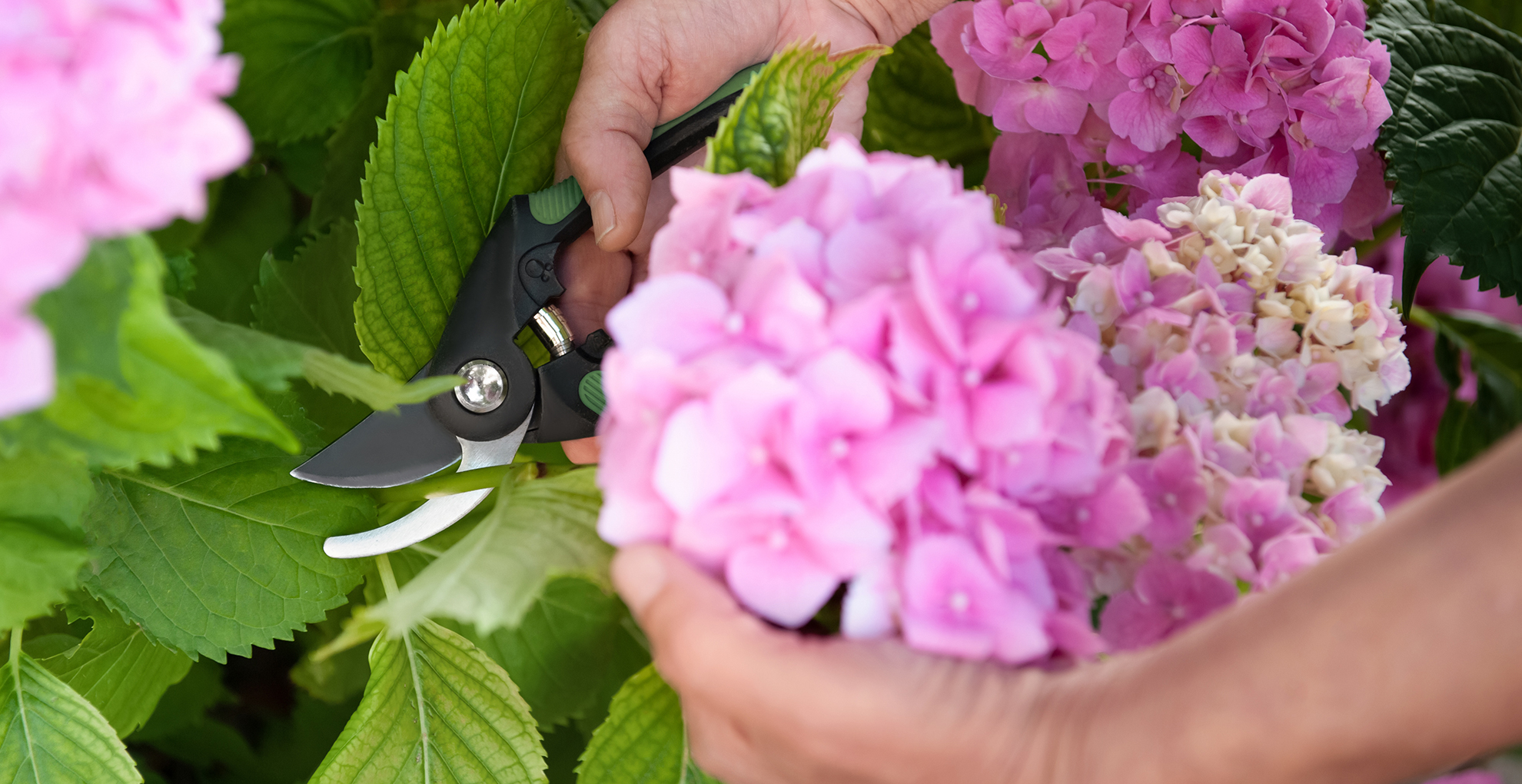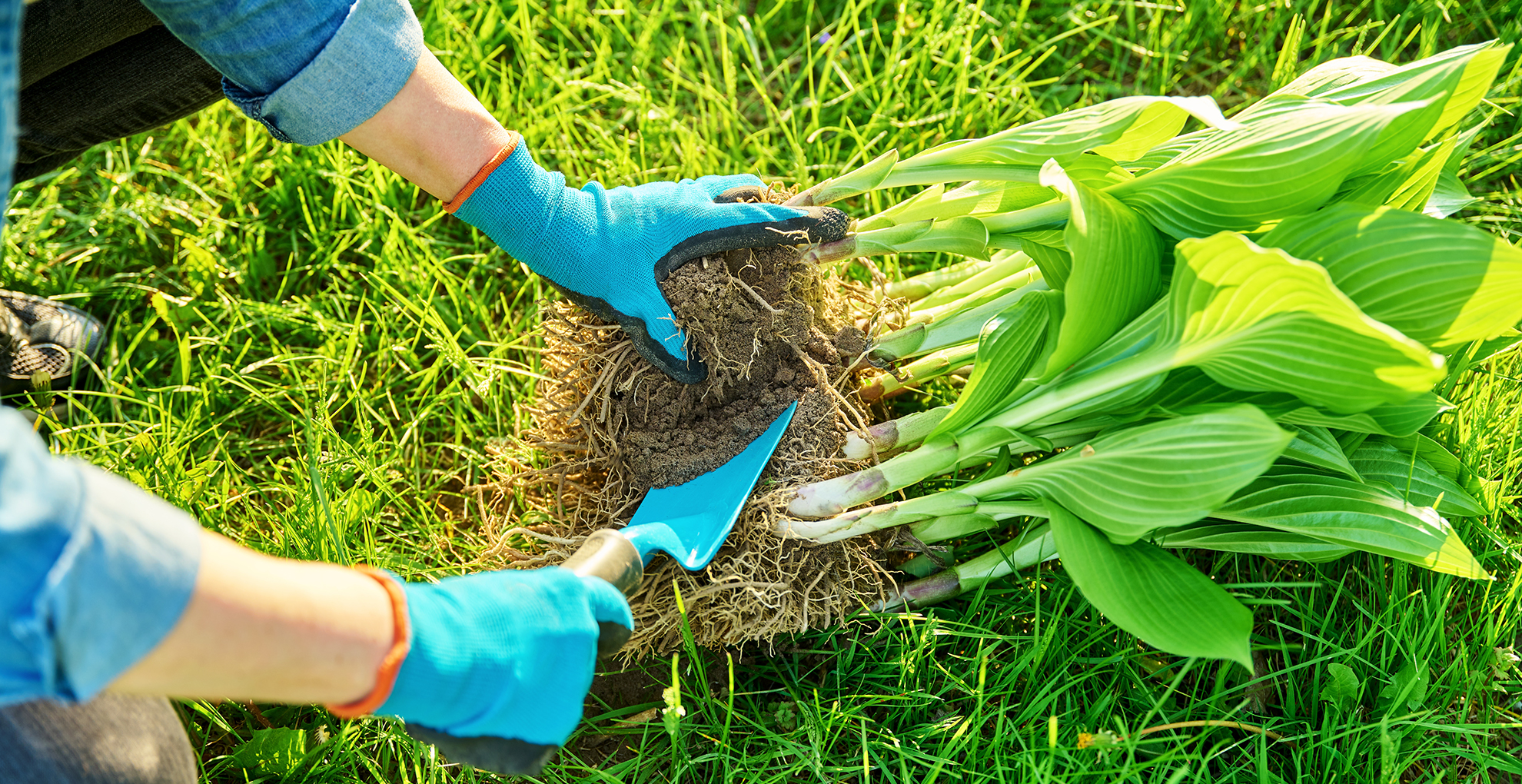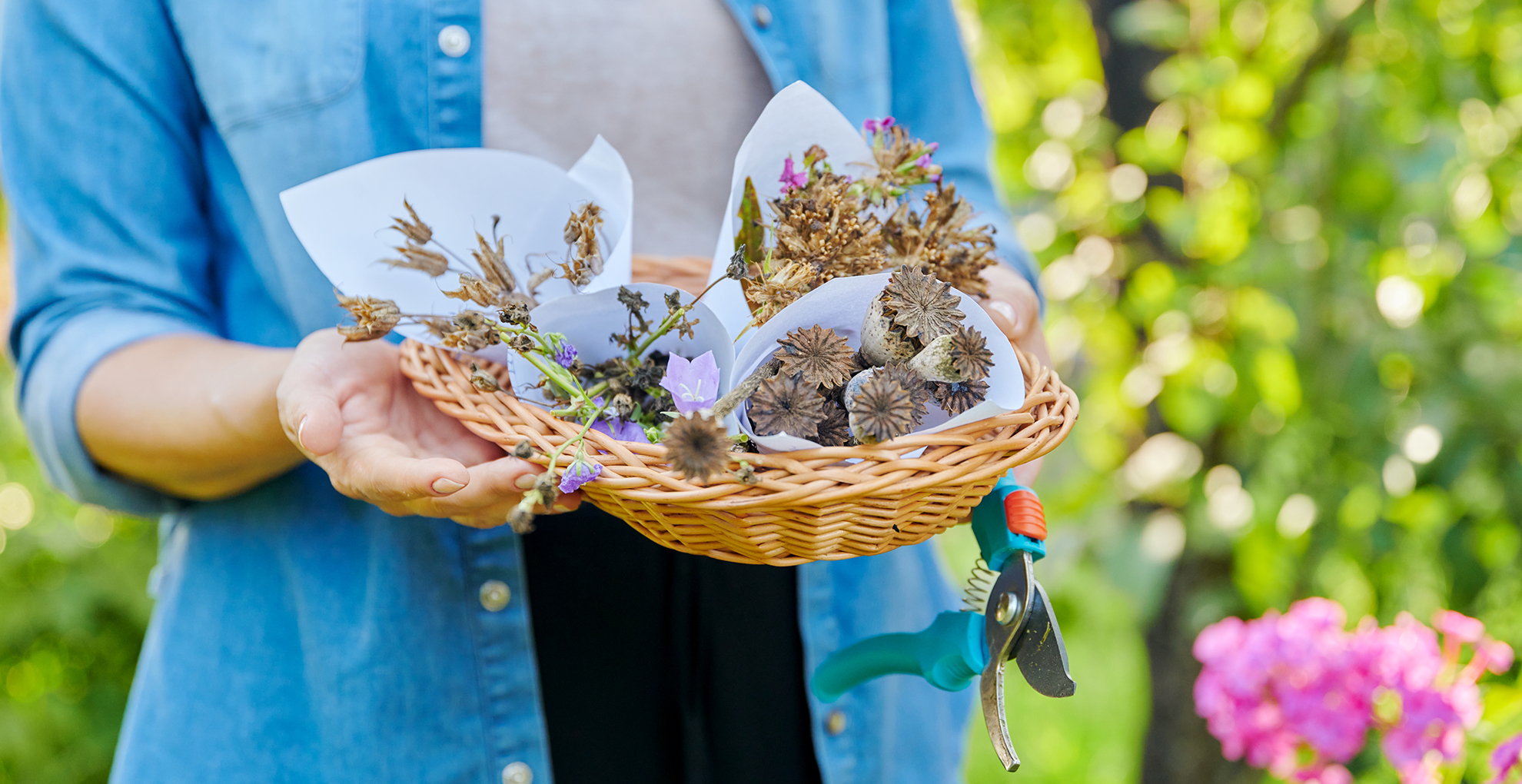
With some basic equipment, the magic of nature and a little patience, you can fill your garden – for free. Propagation is the growing of plants from a parent plant, either by taking cuttings, growing from seed, dividing bulbs or layering techniques.
Anything grown from a cutting will be identical to its parent, so you can be sure that the characteristics you have admired in the existing plant will reappear in the new because it is a clone of the original alluring plant.
Seeds grown from your existing garden plants will be genetically different. Some will always ‘come true’, but you could end up with entirely new varieties.
Whichever method you choose, propagation is the best way to grow your garden trends on a budget. Here's how to get started.
How to fill your garden for free: plant propagation ideas
Propagating plants is the best budget garden idea to double your flowers and foliage for free. Follow these simple steps to enhance your flower beds, garden borders and patio container plant arrangements.
1. Take cuttings

Cuttings from the freshest, greenest part of the stem (called softwood or stem tip) are best taken in the spring or early summer when the plant is growing vigorously.
Choose a healthy stem tip from the parent plant – approx 10cm long, cut just below a leaf joint. Strip off the lower leaves – the plant will struggle to get water up to the leaves without any roots and the more leaves it has, the more it will struggle.
Don’t remove them all, or it won’t be able to make food for itself. Pinch out the growing tip to encourage side shoots to grow and then insert the stem into a pot of gritty compost. To prevent too much moisture loss while the roots are growing, place them in a clear plastic bag or under a cloche.
Take hardwood cuttings from shrubs in autumn and winter. Cut a young woody stem from the parent plant – approximately the same width and length as a pencil.
Make a sloping cut at the base so that you can tell which way is up and insert the sloped end into a pot of gritty compost, or straight into the soil somewhere it can stay undisturbed until the following autumn, by which time it should have developed roots and shoots.
2. Divide plants

Get more for your money by splitting up bulbous plants, shrubs and clump-forming perennials. When you buy a new perennial plant, choose a nice big one and you’ll be able to divide it into several smaller chunks. Ease the plant out of its container and then either pull or cut it into smaller sections.
Geraniums, asters and hostas are easy to split and once planted will quickly form into larger clumps.
The same method can be used for bulbs, tubers, corns and rhizomes, to separate small offsets from the parent plant. Try with dahlias, daylilies, ranunculus, and alliums.
Top tip: Use this technique to divide and replant supermarket herbs and you won’t need to buy another pot all season.
3. Collect seeds

You will need paper bags or envelopes, a pen for labelling, kitchen paper for drying, and a sieve or sheet of paper for separating the seeds from husks. Seeds need to be fully ripe – and make sure they are dry, as any dampness will cause them to spoil.
A general rule of thumb is that you should be safe to collect once the seedpod looks brown and crisp. Harvest from midday onwards, once the dew has evaporated, on a dry, calm day.
If you’re collecting seeds from berries or fruits, wash off all the fleshy parts in water, and spread them out to dry on absorbent paper before packing, labelling and storing.
4. Try layering
Layering is a technique that mimics nature. A branch will naturally touch the ground, grow new roots and suddenly you’ll have a new plant. Fruit bushes like blackcurrants, redcurrants and gooseberries, even strawberries, do this.
With plants like climbing roses and wisteria, you can do it yourself. Simply scrape the skin of a stem and put it into a bit of compost – you can do it directly in the ground or you can use a plant pot – water it regularly to keep it moist, and in a few weeks or more (depending on the plant and variety) new shoots will begin to show.
5 Essential Plant Propagation Tips
Gardening expert and author Anya Lautenbach shares her failsafe advice for propagating success.
- Go for easy wins: "Choose easy-rooting plants to begin with, because one success will lead to the next. I love to propagate lavender, roses and hydrangeas – plants that are usually quite expensive to buy. They’re so easy to grow as they quickly take root from cuttings. Try herbs like rosemary and mint, too."
- Sew, forget, enjoy: "I love the simplicity of growing from seed. You can grow in trays and transplant the seedlings if you have time but I prefer the easy option of broadcast sowing. Opium poppies (Papaver somniferum) are my favourite plant for this method as you scatter the seeds randomly, forget about them, then they surprise you with their floral fireworks when they flower. They are fantastic for the environment too because they are so loved by pollinators."
- Divide and multiply: "Most mature perennials benefit from being divided every two to five years to stop overcrowding and keep them performing well. Some plants, like peonies, have specific requirements so research the plant you’re pulling up before you begin. Give them a good water first, so the soil is damp and easier to divide."
- Follow nature's timing: "I have one simple rule, and that’s to propagate at the right time. In spring, everything wants to grow, so it’s the perfect time to take cuttings, try layering and divide bulbous plants. Even if you neglect your propagated seedlings, or don’t get the planting out exactly right, nature will be on your side and your attempts should still be successful."
- Create good drainage: "Good drainage is a must when propagating. If your cuttings start dying, it’s usually because there’s too much moisture and the freshly developed roots have begun to rot. The ideal growing medium is about 80% peat-free compost to 20% horticultural grit, or you can include grit from your garden – just a few little rocks and stones placed in the bottom of your pot will work to encourage drainage."
If you have surplus seeds of a certain variety, why not seed swap with someone? "My favourite plant to do this with is the Mexican fleabane as everyone loves it," says Anya. "It’s usually quite costly to buy, but the seeds are plentiful and easy to collect and share."
And last but not least, embrace the social aspect. "I find gardening, and propagation in particular, encourages us to stay connected with other people," says Anya. "Ask around your friends, family, neighbours and join local social media groups, to see if anyone has seeds to share or plants you could take cuttings from."







